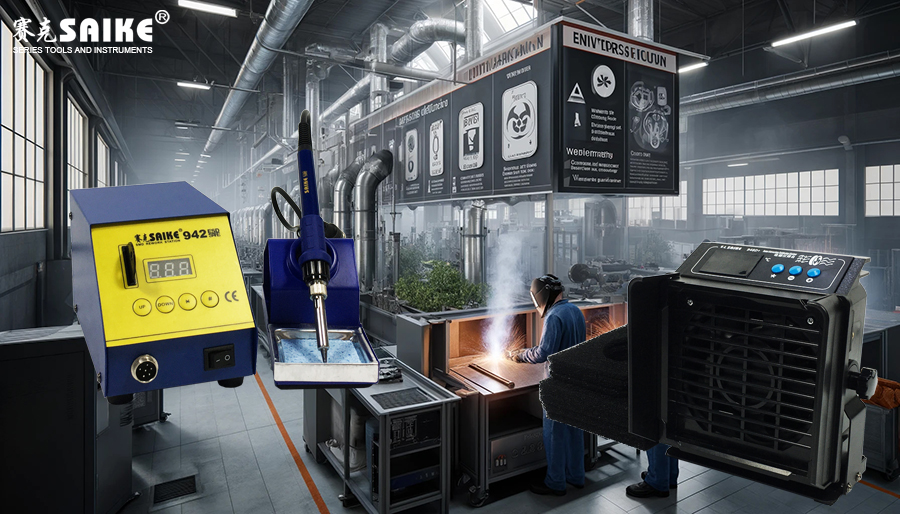
SK-YJ000HT-KP 100038
Globally, environmental regulations and standards play a crucial guiding and restrictive role in the welding industry, especially for the operation of welding stations. These regulations and standards aim to reduce the environmental impact of welding processes, particularly by minimizing harmful emissions, improving energy efficiency, and promoting waste recycling. Understanding and complying with these regulations and standards not only helps protect the environment but also ensures that businesses operate legally and compliantly. This article delves into the environmental regulations and standards related to welding stations.
I. Environmental Regulations and Standards Related to Welding
1.Emission Standards
– Harmful Substance Emissions: Most countries and regions have strict emission standards for harmful fumes and gases generated during the welding process, such as heavy metal vapors like lead, cadmium, chromium, and nickel. For instance, in the United States, the Occupational Safety and Health Administration (OSHA) sets permissible exposure limits (PELs) for specific harmful substances in welding fumes.
– Indoor Air Quality: Many standards and regulations also require improving ventilation and air quality in welding work areas, such as the indoor air quality standards provided by ASHRAE (American Society of Heating, Refrigerating and Air-Conditioning Engineers).
2.Resource Use and Energy Efficiency
– Energy Consumption: The Ecodesign Directive promoted by the European Union and other regions requires electrical equipment, including welding equipment, to meet specific energy efficiency standards.
– Equipment Efficiency: The design and production of various welding equipment also need to comply with specific environmental standards to reduce energy consumption and material waste.
3.Waste Disposal and Recycling
– Hazardous Waste Management: International and domestic regulations, such as the Resource Conservation and Recovery Act (RCRA) in the United States, strictly regulate the handling, storage, and disposal methods for welding waste containing harmful substances.
– Recycling Requirements: Some regional regulations mandate the recycling of metal scraps and other recyclable materials generated during the welding process.
4.Environmental Labels and Certifications
– ISO 14001: This is an international environmental management standard that requires companies to establish and maintain an environmental management system to systematically reduce their environmental footprint.
– RoHS Directive: Restricts the use of specific harmful substances in electrical and electronic equipment, such as lead, mercury, and cadmium.
II. The Importance of Understanding and Complying with Environmental Regulations
1.Corporate Responsibility
– Complying with relevant environmental regulations is part of corporate social responsibility. By reducing environmental pollution and improving resource efficiency, companies can demonstrate their commitment to sustainable development.
2.Legal Compliance
– Ignoring environmental regulations can lead to legal liabilities, fines, and even the revocation of business licenses. Complying with regulations helps avoid these risks and maintains the company’s good reputation.
3.Market Advantage
– Companies that meet environmental standards may gain a competitive advantage in the market, especially as more consumers and partners value environmental protection today.
III. Conclusion
For the welding industry, especially in welding station operations, understanding and implementing environmental regulations and standards is crucial. It not only helps protect the environment but also ensures the legality and efficiency of business operations. With increasing environmental awareness and technological advancements, more environmental regulations and standards are expected to emerge in the future. Companies should continuously monitor these changes to ensure their operations always comply with the latest legal and market requirements.


